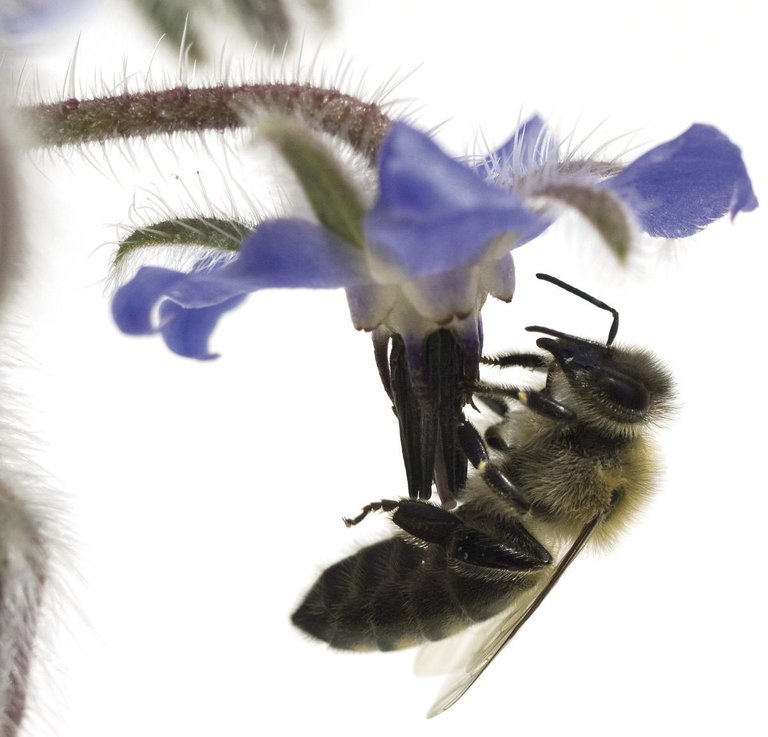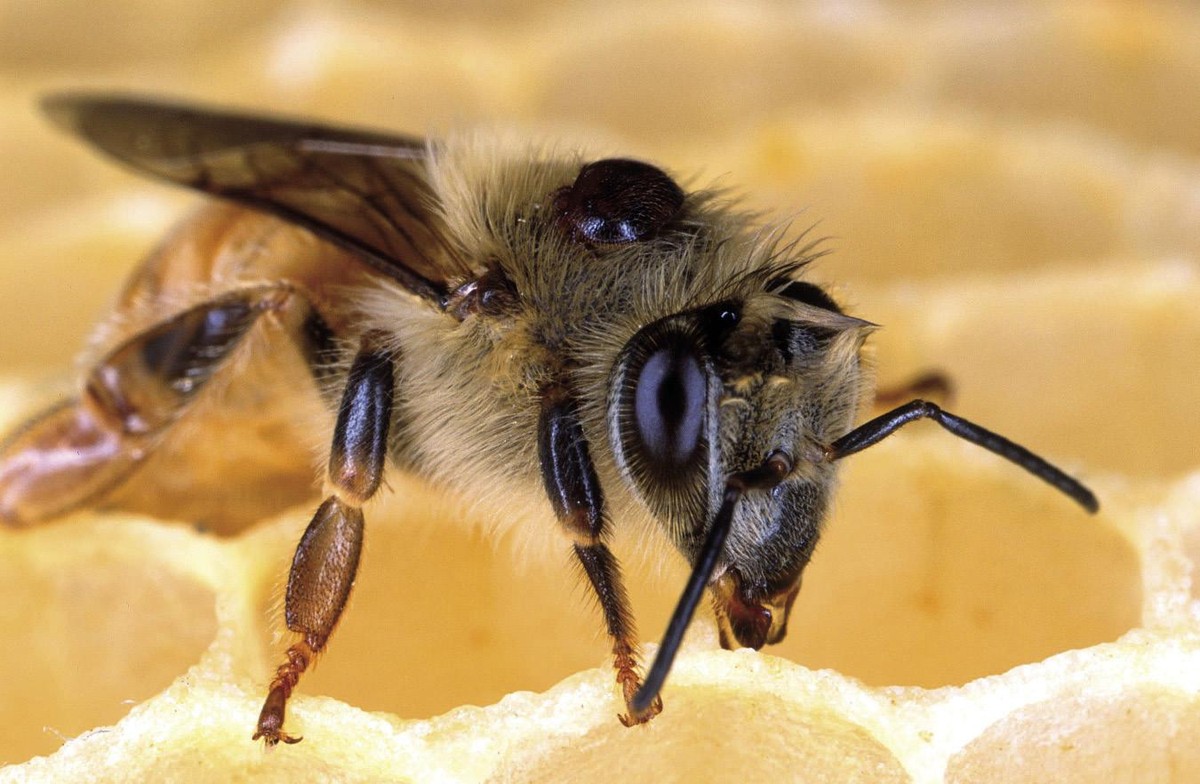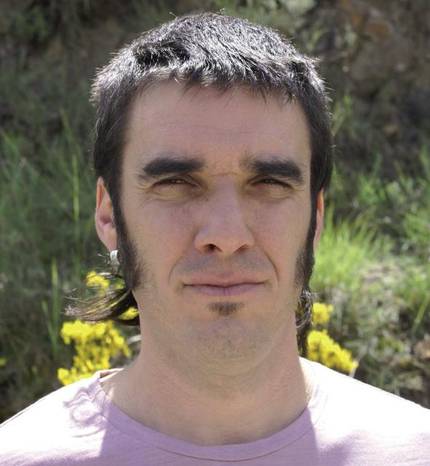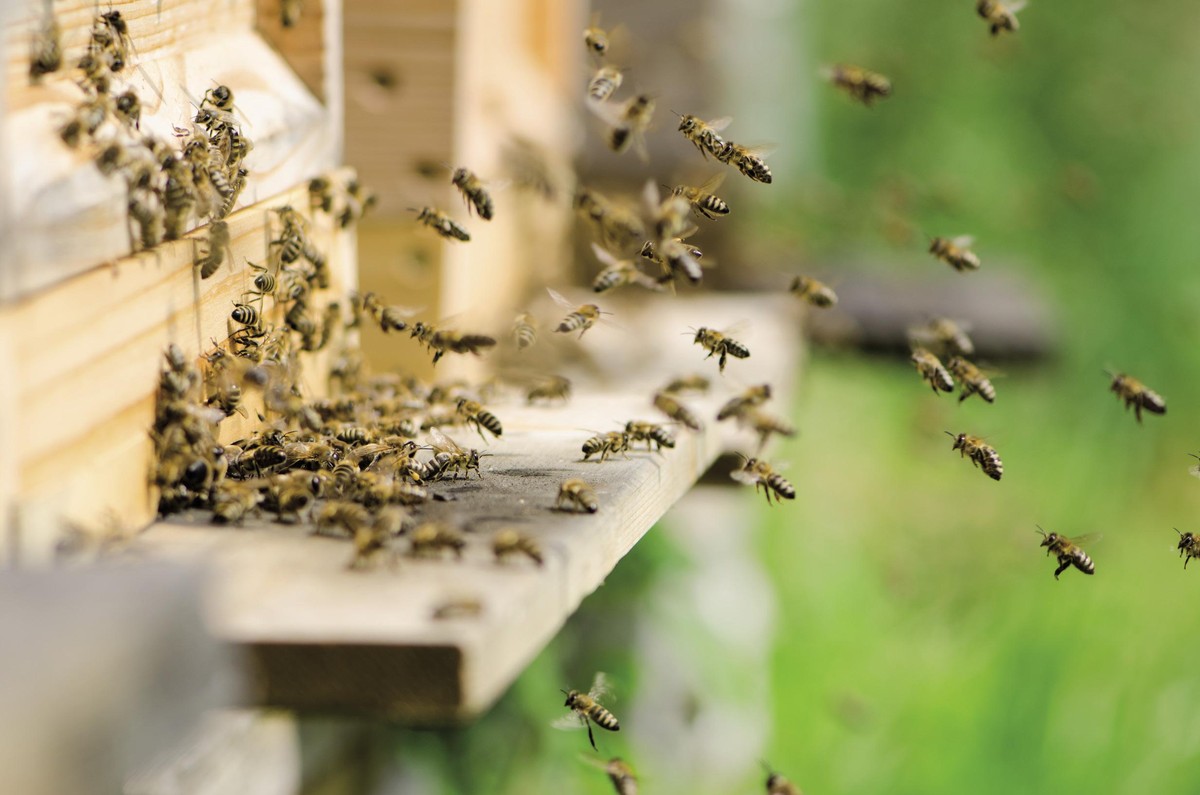Bees above all threats

They are not sweet times for bees. Pesticides, parasite mites, fungi, viruses, wasps… In almost everyone, bees are affected. All experts agree that behind the general decline of bees there is a sum of problems. This is also believed by Egoitz Galartza Garaialde, veterinarian of the Association of Beekeepers of Gipuzkoa. However, “we must differentiate the situation that we live in Euskal Herria, and Galartza wanted to clarify first of all the situation of bees in the US or in some places in Europe”. “The problem of these places is very much related to industrial agriculture.”
He has set the example of US maize giants: “The landscape is totally altered, there is only one crop and there are no wild plants, imagine where bees have to go in search of food. In the end, at the same time, this bee is contaminated with parasites and viruses, it has to make great distances to look for food and the foods it gets are contaminated by pesticides. It is not surprising that the bee is lost.”
The problem is not just about bees. “We take care of the bee and still look at how it is, then think the rest of pollinators that we do not even see,” explains Galartza. In fact, last February the United Nations IPBES platform (Intergovernmental Scientific Platform for Biodiversity and Ecosystem Services) presented a report on the situation of global pollinators. The press release read: “Throughout the world there are more and more pollinating species in danger of extinction, often provoked by man due to various pressures”.
The IPBES study highlights the economic, social and cultural importance of pollinators: One of the authors of the report "The health of pollinators is directly related to our well-being". “Without pollinators we would not have chocolate, coffee or apple,” another said. They estimate that pollinators contribute to 75% of the world production of food plants and that the direct production of pollinators has a value of 200-500 billion euros annually.
Other similar estimates made by Greenpeace in 2014 indicate that in the Basque Country and Navarre the work of pollinators reaches an annual value of 32 million euros.
“It must be taken into account that these data refer exclusively to the production of food,” said Galartza. “The pollination of wild plants is excluded and, in the case of bees, the value of the production of honey and beehive products”.
Euskal Herria is not the worst place for pollinators. There is practically no industrial agriculture, and according to a study carried out last year by the UPV/EHU and the Unesco Chair, 46% of the ecosystems of the Autonomous Community of the Basque Country are very suitable for pollinating insects, due to the nidification sites and the abundance of food.
Threats against threats Threats against human rights defenders
However, the bees of Euskal Herria have problems. “For us the most serious thing is the baroque and the associated viruses,” says Galartza. The baroque is an mite from Asia that is placed on the back of the bees and absorbs them the hemolinfo. It is difficult to control the mud. In addition, resistance to drugs is being developed.
The warm winter of this year has not helped. “When the cold ones come, the bees do not come out of the hive, the queen does not put egg and the mud does not reproduce, but it reproduces in the larvae of the bees. But this year the bee has not stopped, nor the baroque.” Thus, in spring, beekeepers have seen a lot of mud. “This can jeopardize the survival of bee colonies in autumn.”
Galartza also mentions the importance of forest transformation. “Where once there were chestnut trees, cherry trees, etc., there is now pine trees and there is no food for bees.”
Another problem is the Asian wasp that has expanded in recent years. “The impact of the wasp is more pronounced from autumn to winter,” explains Galartza. It is then when the bees are born that will live in winter. “The summer bees live about 40 days and the winter bees three or four times more. That is why winter must be better fed. If there is a lot of wasp, the bee does not feed well, so it can happen that in winter the bee is lost.”
However, it is often not easy to know why bees have been lost. “When we open the hive we find ourselves empty, but why has he died? Has hunger died? Cold? For the wasp? For the barrel? It is difficult to say so. It can be the sum of all. Until 30 years ago there was no mud, 20 years ago there were no current pesticides, until 6 years ago there were no wasps. They are adding new things that hurt.”
Looking for solutions
The solutions are not easy. Various methods have been tested with the wasp, such as cheating, removing nests, or capturing and loading wasps with insecticide for transfer to the nest. “We hope that with all this we can reach a certain balance. We know that we will not end the wasp, but at least we will keep it under control.”
As for the baroque, Galartza highlighted the European project Smartbees which was launched a couple of years ago. One of the objectives of this project is the selection of bees more resistant to baroque.
Beekeepers were beginning this path on their own: “Four or five years ago we launched a selection program to select bees more resistant to diseases in general. And then, from the UPV/EHU came the proposal to participate in the Smartbees project.”
Key to diversity

At the University of the Basque Country, genetics Andone Estonba Rekalde and Iratxe Montes Asperilla work on two European projects related to bees: Smartbees and Beehope. “Both projects have the same objective: to conserve and promote local bees,” explains Estonba. In fact, in Europe the bee is suffering a great loss of diversity, since of the ten existing subspecies, two of them are dominating beekeeping.

“If we lose diversity, we lose the responsiveness to changes,” says Estonba. Therefore, an improvement program is proposed to adapt the bee to the needs of beekeepers, but using the native bee,” says Montes.
In the project, 15 beekeepers have been included, measuring the characteristics of ten colonies. It is observed that the starting point is good, since in the first measurements made a great variability has been found. “Variability is very good because it means you can make a good choice,” says Estonba. The selection will begin next year. For this purpose they will have the collaboration of Neiker. “At Neiker we have genetic improvement specialists, so far they have worked with sheep and cows, and are now interested in working with bees,” said Estonba.
Selection programme
The most important of the characteristics that they want to choose is the resistance to the baroque. And another related to this is the hygienic behavior: “Bees clean the Baroque larvae and thus remove the mud from the hive. That is why this behavior is very important,” explains Montes.
Submission is also going to be given because the bees here are quite aggressive and sharpen with ease. “When the Germans came, they were surprised. They are used to a very slow bee,” says Estonba. These Germans are the project coordinators and, according to Estonba, “in the last meeting they gave Euskal Herria as an example, they praised how beekeepers have been organized and how they are working. And it is that in this type of projects the most difficult is to create an effective and stable team, and the most difficult is done.”
In addition, the Smartbees project aims to perform a genetic characterization of bees across Europe. “We will analyze what subspecies exist, what genetic variability these subspecies have, their geographical distribution, etc.”, explains Estonba.
Conservation areas
The Beehope project also aims to preserve the bee of the place, but the point of view is totally different. A conservation area is being prepared in Iturrieta, in collaboration with Neiker and the Gipuzkoa and Araba Beekeepers Associations. “At this conservation point we will let the native bee evolve naturally. They will not be in the hands of a beekeeper,” explains Montes. “I think the approaches of Smartbees and Beehop are complementary,” adds Estonba, “one adapts the bee to be loved and used by our beekeepers and the other ensures the maintenance of the diversity of these bees through conservation spaces.”
In addition to the sources, there are three other conservation areas in France and two in Portugal. “We are now thinking that it would be good to put more into the natural parks of Euskal Herria, where it is easy to regulate, for example, that beekeepers in the area cannot use bees outside. The natural parks of Izki and Aiako Harria would be a good place for the conservation of our bees,” explains Estonba.
Although some beekeepers use the bee outside, in Euskal Herria this problem is not serious, “but it can come, the practices of beekeepers can change a lot in a few years, and as a prevention we consider important to build this type of conservation zones”, said Estonba.
Genetic studies will guarantee the membership of bees in conservation areas. On the other hand, the genetic variability in these areas will be analyzed. It will also focus on the microbiome. Specifically, they will analyze which microorganisms live in the environment of beehives, in the beehive itself and in the intestine of bees, and their effects on the health of bees.
“We have only begun,” says Estonba, “but we must advance in these investigations, because the bee is wrong and we need a bee.” Beekeepers are also satisfied with projects such as: “Beekeepers work at ease in these cases. Only beekeepers can’t do this.” And the same says Estonba: “We all have to collaborate to face such a social challenge.”
Looking to the future, Galartza is optimistic: “Beekeeping is something alive, an activity in constant change. The beekeeping of 20 years ago and the current one have nothing to see, nor the profile of the beekeeper. There are more and more technificated beekeepers, increasingly trained. The beekeeper increasingly knows the bee and works increasingly finer. Here an industrial beekeeping is impossible because it does not seem. But another beekeeping is possible, and only that will come from that technification and training. I think the next few years will be many to learn and do that fine work, in that sense I think we have a nice future.”
Buletina
Bidali zure helbide elektronikoa eta jaso asteroko buletina zure sarrera-ontzian














